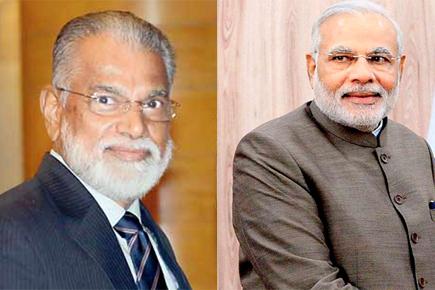ISRO chairman K. Radhakrishnan Thursday presented to Prime Minister Narendra Modi the first set of images of the Martian surface taken by the Mars Orbiter

ISRO chairman K. Radhakrishnan Thursday presented to Prime Minister Narendra Modi the first set of images of the Martian surface taken by the Mars Orbiter
New Delhi/Bangalore: ISRO chairman K. Radhakrishnan Thursday presented to Prime Minister Narendra Modi the first set of images of the Martian surface taken by the Mars Orbiter.
ADVERTISEMENT
The spacecraft started taking images of Mars hours after it was inserted in its orbit Wednesday and beamed them to earth, a space official said in Bangalore Thursday.
 ISRO Chairman K. Radhakrishnan and Prime Minister Narendra Modi
ISRO Chairman K. Radhakrishnan and Prime Minister Narendra Modi
"The Mars Colour Camera (MCC) onboard started working soon after the Orbiter stabilised in the elliptical orbit of Mars and has taken a dozen quality pictures of its surface and its surroundings," Indian Space Research Organisation (ISRO) scientific secretary V. Koteshwara Rao told IANS.
The camera took the first image from an altitude of 7,300 km with a 376-metre spatial resolution.
According to the Prime Minister's Office (PMO), Radhakrishnan Thursday presented the first set of images to Modi in New Delhi.
As one of the five scientific instruments that will study Mars for life-sustaining elements over the next six months, the camera (MCC) will take images of its surface features and weather patterns such as dust storms.
"The camera will also take images of the planet's two moons - Phobos and Deimos - and beam them to our deep space network centre near Bangalore," Rao said.
Scientists at the mission control centre here are monitoring the orbital movement of the spacecraft around Mars and checking the health of its instruments round the clock.
"Health and other parameters of the spacecraft are fine and all the essential functions are performing normal," Rao said.
The spacecraft takes 3.2 earth days or 72 hours, 51 minutes and 51 seconds to go round Mars once while orbiting at a distance of 500 km nearest and over 80,000 km farthest from its surface.
The other four instruments will conduct experiments to study the Martian surface and rich mineral composition and scan its atmosphere for methane gas to know if it can support life.
Recalling that everything went on as programmed for the crucial orbital insertion Wednesday, Rao said a team of 300 scientists and technicians perfectly executed the mission as planned.
"We have demonstrated our technological capability to launch interplanetary missions and achieved success in entering Mars orbit in the first attempt," Rao said.
Lauding the scientists for grasping the complexities in outer space technology, trajectory and placing a spacecraft in the orbit of other planets like Mars, Rao said the mission was a great learning and would help them in interplanetary missions.
 Subscribe today by clicking the link and stay updated with the latest news!" Click here!
Subscribe today by clicking the link and stay updated with the latest news!" Click here!






